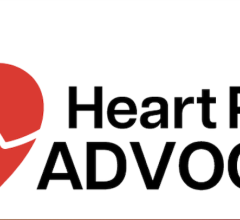
January 2, 2018 — The Heart Rhythm Society (HRS), in partnership with WebMD Education, announced in December the launch of a free, online educational tool called “How to Reduce Your Risk of Stroke Due to AFib.” The new tool is part of a larger series of educational activities hosted by WebMD Education to help patients, caregivers and those who may be at risk to learn more about various medical conditions. The atrial fibrillation (AFib)-focused tool is an easy-to-use, interactive activity delivering important information straight into the hands of the user. This is the first collaboration between HRS and WebMD Education.
Atrial fibrillation (AFib), the most common heart arrhythmia, affects more than 33 million people worldwide and has been known to increase a person’s risk of stroke by 500 percent and even death.[1][2] In the United States, more than 2.5 million adults are living with AFib, and it accounts for approximately one-third of hospitalizations for cardiac rhythm disturbances. AFib occurs when the upper chambers of the heart (the atria) fibrillate, or “quiver,” which causes a rapid, irregular heart rhythm. The normal heart rate for an adult is between 60 and 100 beats per minute. When the heart experiences AFib, the atria can beat over 300 times every minute.
The new online tool, which can be accessed on WebMD Education and via its sister site, Medscape, presents physician-reviewed, expert content about the signs and symptoms of AFib. Upon completing the activity, users are more aware of AFib and the risks associated with the condition. Specifically, the tool covers the following topic areas:
- Definition and Types of AFib;
- Symptoms and Risks;
- How AFib is Diagnosed;
- Understanding and Preventing Stroke;
- Goals and Types of Treatment; and
- What to Ask Your Doctor
“In a day in age where information, correct and incorrect, is available at your fingertips, it is more important than ever to arm patients with accurate and helpful information about their health. With our physician-led expertise in electrophysiology and WebMD’s extensive digital footprint, this interactive tool provides patients and caregivers with information that will allow for more open and informed conversations with physicians,” said Lynda E. Rosenfeld, M.D., FHRS, professor of medicine and pediatrics at the Yale School of Medicine. “HRS has an ongoing commitment to help educate the public about life-threatening arrhythmias, and what better partner than WebMD to share in this mission to help save lives.”
In 2015, a survey of 240 patient and caregiver respondents conducted by HRS gathered insights about common practices related to searching for heart arrhythmia information. Survey findings demonstrated the importance of readily available tools — indicating physicians, internet searches and internet consumer medical sites such as WebMD are top resources for learning about heart arrhythmia. Additionally, the survey revealed that 98 percent of respondents view WebMD as their main source of health information, and more than 60 percent of respondents have used and would use WebMD again for information on heart arrhythmias.
The new online activity available on WedMD Education is supported in part by Boehringer Ingelheim Pharmaceuticals Inc., Bristol-Myers Squibb & Pfizer Alliance, Janssen Pharmaceuticals and Medtronic Inc.
For more information: www.myafib.org


 March 31, 2025
March 31, 2025 







